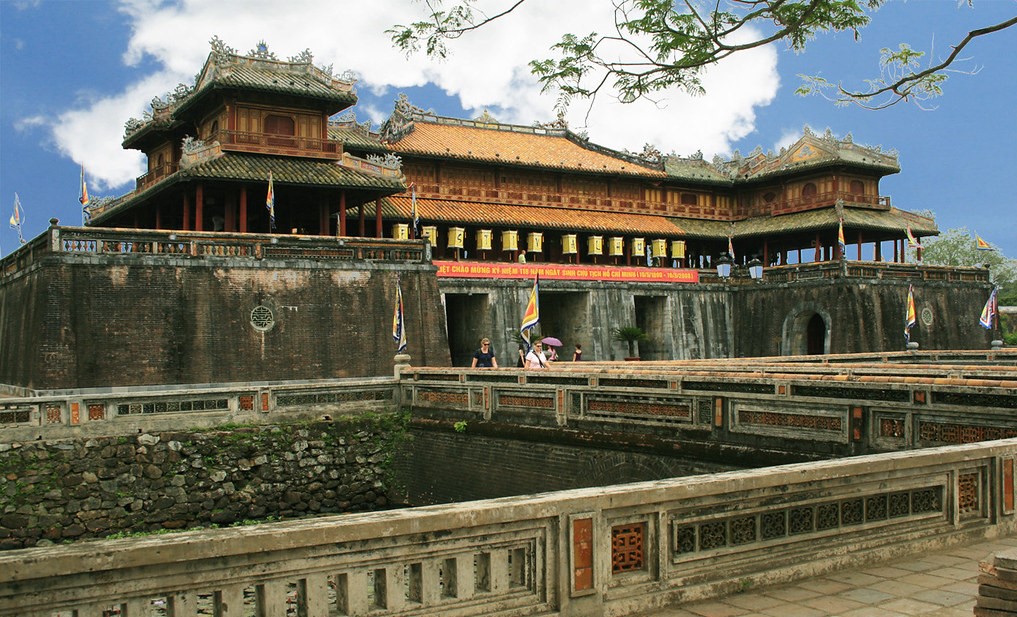
Ngo Mon Gate in the Hue Monuments Complex, Hue Imperial City
They include eight world cultural and natural heritage sites recognised by UNESCO, 128 special national relics, 3,614 national relics, and more than 10,000 provincial relics.
Of the total, 70,000 are intangible cultural heritages, 498 are national intangible heritages, 15 are intangible heritages inscribed by the UNESCO, and nine are documentary heritages.
Not only do they reflect rich culture and history of Vietnam, these heritages have also created a firm foundation for the development of the national cultural industry.
Many heritages have become unique tourism resources, contributing positively to developing local economic growth and improving the livelihoods for the community.
In 2019, before the COVID-19 pandemic broke out, eight world cultural and natural heritage sites in Vietnam alone welcomed more than 21.3 million tourists, including nearly 11 million foreigners, bringing total tourism revenue of roughly 3.1 trillion VND.
In recent years, our Party and State have always attached great attention to preserving heritage. Every year, the state budget allocates funding to the National Target Programme on Culture to preserve relics.
It is necessary to establish a fund which is capable of mobilising non-budget resources to improve the efficiency of conservation and promotion of heritage. This is also a solution to help raise awareness and responsibility of the entire society in safeguarding and upholding the value of cultural heritage.
In the 2011-2015 period, a total of 1.4 trillion VND was spent on preserving 1,302 relics. During the 2016-2020 period, 245 billion VND was allocated to conserve 471 relics.
However, according to experts, the funding to protect, repair, and upgrade monuments still remains lower than the actual needs.
Facts have shown that many monuments and heritage sites are seriously downgraded in localities, many intangible cultural heritages are at risk of disappearing due to lack of investment for conservation. In addition, the funding for collecting and repatriating heritage is limited.
Therefore, it is necessary to establish a fund which is capable of mobilising non-budget resources to improve the efficiency of conservation and promotion of heritage. This is also a solution to help raise awareness and responsibility of the entire society in safeguarding and upholding the value of cultural heritage.
Cultural development funds have been established in many countries around the world, helping them to increase the activeness of implementing strategies on preserving and developing cultural values.
Notably, the United States Ambassadors Fund for Cultural Preservation (AFCP) has provided financial support to implement 16 conservation projects in Vietnam over the past two decades.
Thua Thien Hue Province launched the Hue Heritage Conservation Fund to seek more investment resources for restoration, conservation, and development of local heritage.
According to the Hue Monuments Conservation Centre, since its official operation in the second quarter of 2023, the Fund has mobilised about 8 billion VND to restore a number of relics in the locality.
The good news is that Article 131 of the Law on Cultural Heritage (amended) includes regulations on the Fund for the Preservation of Vietnamese Cultural Heritage
Accordingly, the Fund is established by the Government and managed by the Ministry of Culture, Sports and Tourism. It aims to mobilise financial resources for the protection and promotion of cultural heritages that have not yet received funding from the budget, including national and special national monuments that are at risk of destruction. The fund is also spent to collect artefacts, purchase, and repatriate Vietnamese antiques which were sold abroad.
Experts hailed that the establishment the Fund will allow the integration of diverse financial sources such as public budget, sponsorship from private enterprises, charity funds, contributions from individuals and organisations, and revenue from cultural activities, for the common purpose of safeguarding and upholding Vietnamese heritage.
by Viet Anh-NDO





